They say a picture is worth a thousand words, and when it comes to Labradane mixed dog breeds, the pictures truly speak volumes. These unique canines possess a captivating blend of characteristics inherited from their Labrador Retriever and Great Dane ancestors. From their expressive eyes to their muscular build, Labradanes are a sight to behold.
But appearances aren't everything. In this discussion, we'll not only explore the physical attributes of Labradanes, but also uncover fascinating facts about their temperament, intelligence, and compatibility with families.
So, prepare to be captivated by the charm and allure of Labradane mixed dog breeds as we delve into their world.
Key Takeaways
- Labradanes are a mixed breed dog that is a cross between a Labrador Retriever and a Great Dane.
- Labradanes are known for their large size, muscular build, and friendly expression.
- Labradanes can adapt well to apartment living if they have lower activity levels and display polite behavior towards other residents.
- When choosing a dog for an apartment, size alone should not be the sole determinant, and prioritizing qualities such as being quiet, low-energy, and calm indoors is important.
Labradane Mixed Dog Breed Overview
The Labradane mixed dog breed, a combination of a Labrador Retriever and a Great Dane, boasts a powerful and muscular build along with a friendly and gentle expression. These dogs have a broad head, deep chest, and a long, sturdy tail. Labradanes are known for their large size and strong appearance. They've a short, dense coat that comes in various colors.
When it comes to adaptability in apartment living, Labradanes can do well as long as their activity levels are lower. Size alone isn't the only factor to consider when choosing a dog for an apartment. It's important to prioritize qualities such as being quiet, low-energy, and displaying polite behavior towards other residents. Small dogs with high energy levels and frequent barking may be less suitable for apartment living.
Physical Characteristics of Labradanes
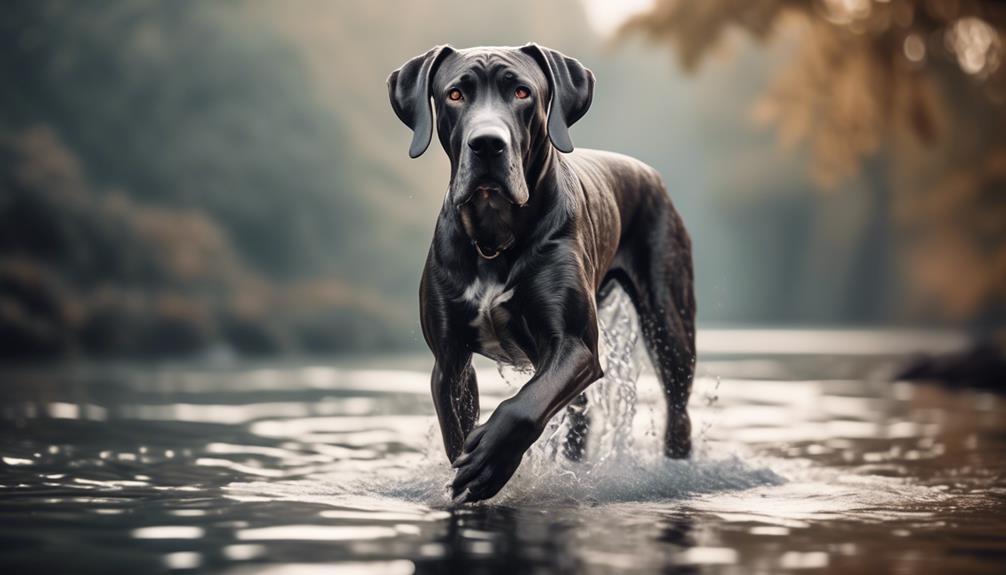
Labradanes, the mixed breed dogs that are a cross between a Labrador Retriever and a Great Dane, possess distinctive physical characteristics. Here are some key features that make Labradanes stand out:
- Size: Labradanes are known for their large size and muscular build. They can tower over other dogs and are sure to catch everyone's attention.
- Coat: Labradanes have a short, dense coat that comes in a variety of colors. Whether it's black, yellow, chocolate, or a mix of these, their coat is always sleek and shiny.
- Expression: Labradanes have a friendly and gentle expression that melts hearts. Despite their size, they've a kind and approachable appearance.
- Structure: Labradanes have a broad head, deep chest, and a long, sturdy tail. These physical attributes contribute to their strong and powerful appearance.
Labradanes are truly unique dogs with striking physical characteristics that make them stand out in any crowd.
Labradanes in Apartment Living
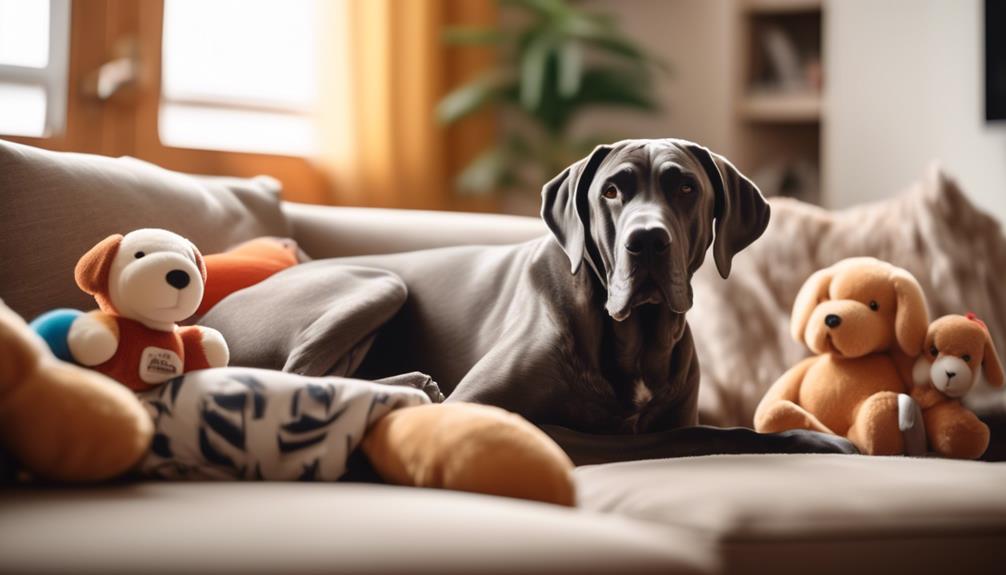
Living in an apartment with a Labradane requires careful consideration of their adaptability and specific needs. While Labradanes are known for their large size and muscular build, they can still adapt well to apartment living if they have lower activity levels. However, size alone should not be the sole determinant when choosing a dog for an apartment. Prioritizing qualities such as being quiet, low-energy, and displaying polite behavior towards other residents is important. Small dogs with high energy levels and frequent barking may be less suitable for apartment living. Factors to consider when choosing a dog for an apartment include the size of the living space, the dog's energy levels, and their ability to be calm indoors. Consider the comfort of neighbors when selecting a dog for an apartment.
| Factors to Consider When Choosing a Dog for an Apartment |
|---|
| Size of the living space |
| Energy levels of the dog |
| Ability to be calm indoors |
Size Considerations for Apartment Dogs
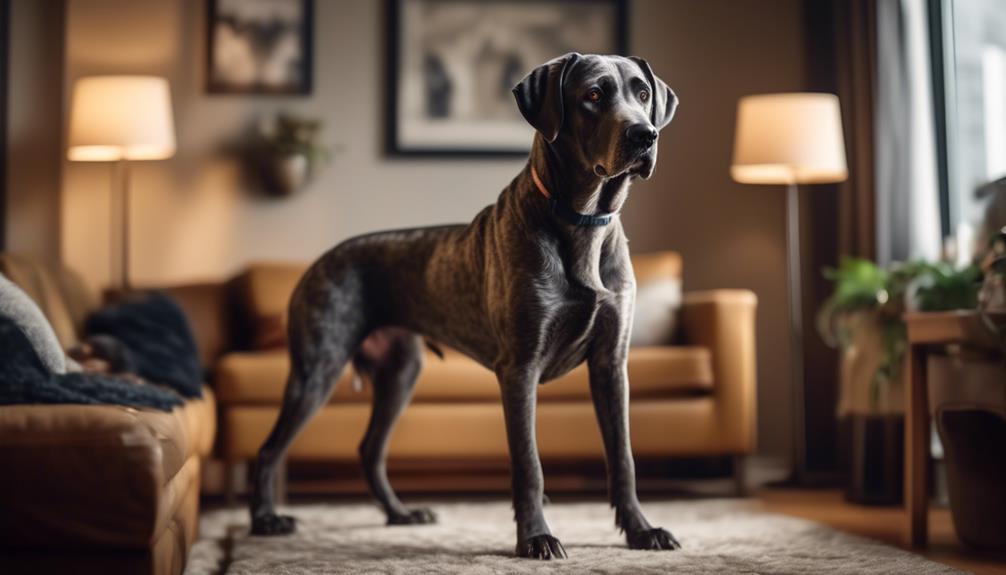
Considering the living space and the specific needs of your dog is crucial when it comes to size considerations for apartment dogs. To help you make an informed decision, here are four important factors to consider:
- Space availability: Assess the size of your apartment and determine if it can comfortably accommodate a larger dog or if a smaller breed would be more suitable.
- Exercise requirements: Consider your dog's energy levels and exercise needs. Some breeds may require more space and outdoor activities to stay happy and healthy.
- Noise level: Take into account your neighbors and the noise tolerance of your dog. Certain breeds are naturally quieter and may be more suitable for apartment living.
- Climate considerations: Think about your apartment's climate and whether your dog's size and coat will be compatible. Some breeds may struggle in extreme temperatures and require additional care.
Factors to Consider for Apartment Dogs
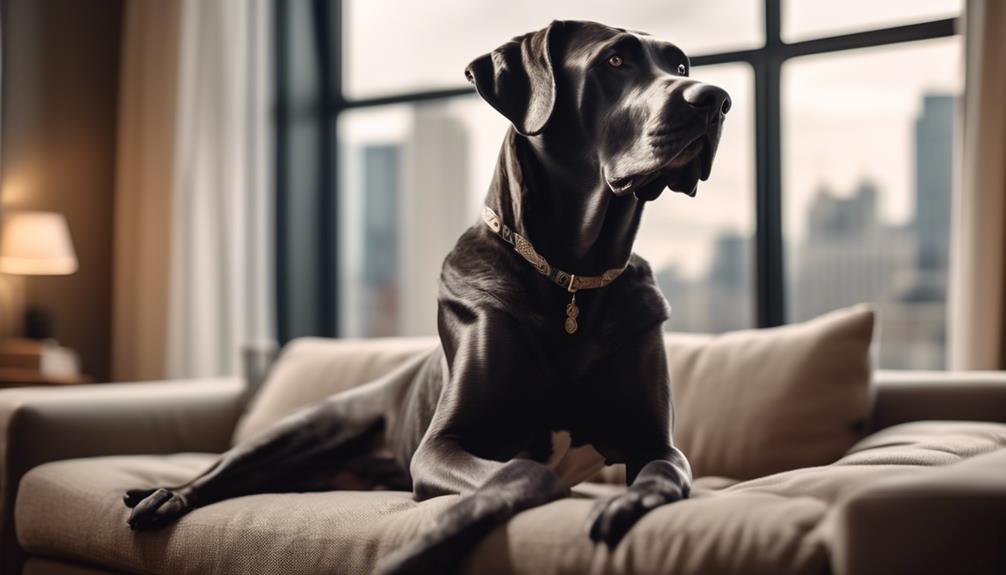
When choosing a dog for an apartment, it's important to consider several factors. Size is obviously one consideration, but it's not the only one that matters. Some larger breeds can adapt well to apartment living if they have lower energy levels. On the other hand, there are certain small dog breeds with higher energy levels that can still thrive in apartments.
It's crucial to prioritize qualities such as being quiet, low-energy, calm indoors, and displaying good manners. You should also consider the comfort of your neighbors when selecting a dog for an apartment. Dogs that are highly sensitive, independent thinking, or assertive may be harder for first-time dog owners to manage.
Dogs Not Suited for Apartment Living
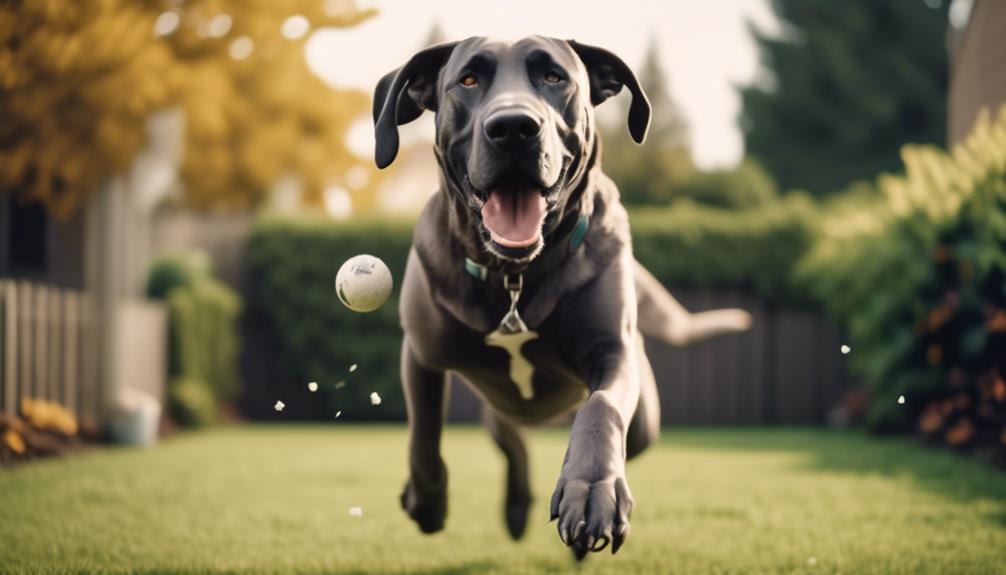
Certain dog breeds may not be well suited for apartment living due to their specific needs and characteristics. It's important to consider these factors when choosing a dog for apartment living:
- High-energy breeds: Dogs with high energy levels may struggle in a small living space without ample opportunities for exercise and mental stimulation.
- Excessive barkers: Some breeds have a tendency to bark excessively, which can be disruptive in close quarters and may lead to neighbor complaints.
- Large breeds: While size alone shouldn't be the sole determinant, some larger breeds may find it challenging to navigate and feel comfortable in a confined apartment.
- Dogs with separation anxiety: Breeds that form strong attachments to their owners and are prone to separation anxiety may struggle when left alone for extended periods in an apartment setting.
Labradanes and Family Friendliness
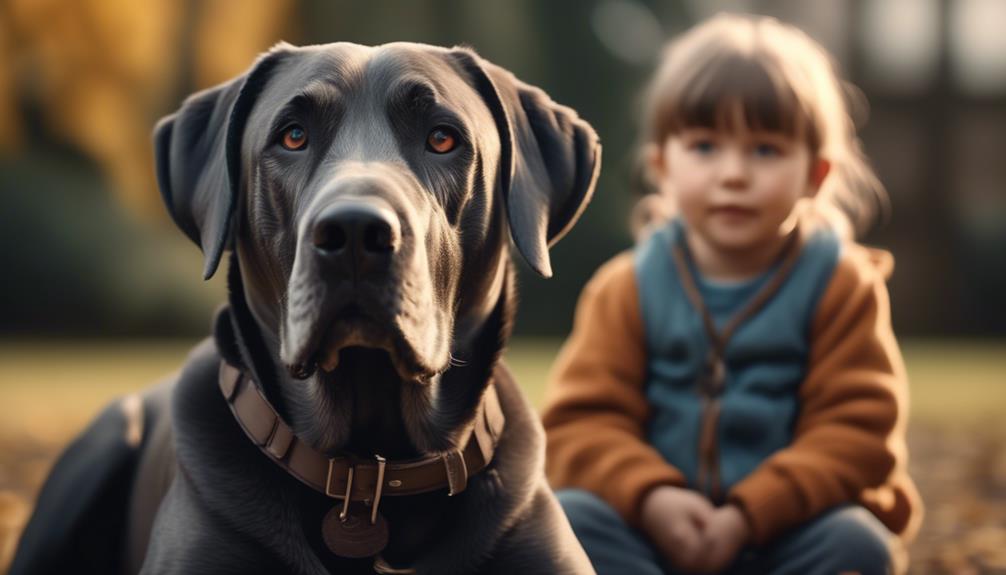
Labradanes, with their friendly and gentle nature, are known for their exceptional family friendliness. These mixed breed dogs are great companions for families of all sizes. Labradanes are known for their love and loyalty towards their human family members. They're patient and gentle with children, making them excellent playmates and protectors.
Labradanes also get along well with other pets in the household, especially if they're socialized from a young age. They've a calm and tolerant demeanor, which makes them easy to train and handle in a family setting. Labradanes thrive on human companionship and enjoy being a part of family activities.
Whether it's going for walks, playing in the backyard, or cuddling on the couch, Labradanes are always eager to be by your side.
Affectionate Traits of Labradanes
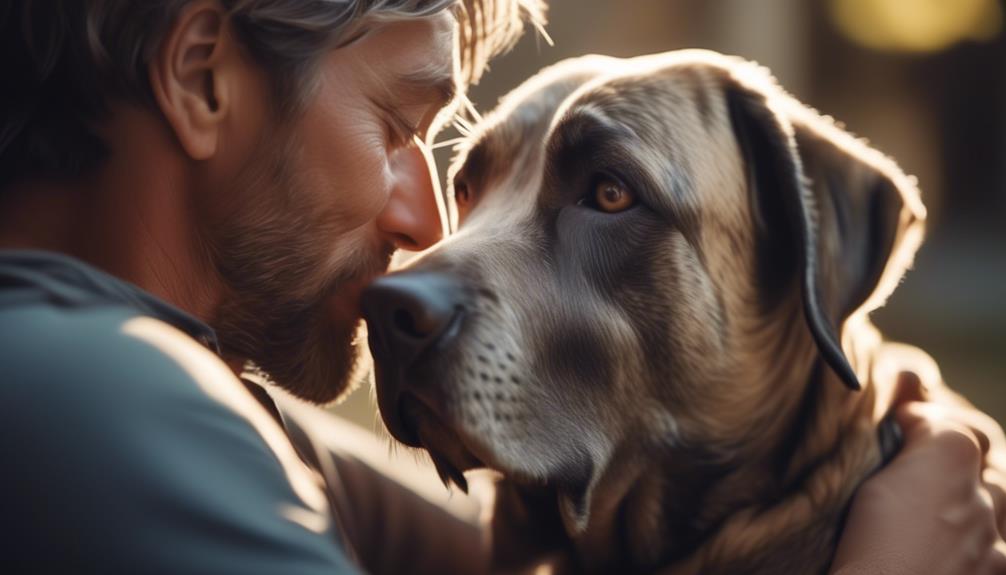
Labradanes are known for their affectionate nature, making them loving and devoted companions for their owners. Here are four affectionate traits that make Labradanes such cherished pets:
- Loyal and Devoted: Labradanes form strong bonds with their owners and are incredibly loyal. They'll always be by your side, offering comfort and support.
- Affectionate Greetings: Labradanes have a tail-wagging enthusiasm when they see their loved ones. Their warm and welcoming greetings show their love and excitement.
- Cuddly Companions: Labradanes are known for their love of cuddling. They enjoy snuggling up close to their owners, providing warmth and affection.
- Emotional Support: Labradanes have an incredible ability to sense their owner's emotions. They can offer comfort and solace during difficult times, providing a source of emotional support.
With their affectionate nature, Labradanes bring joy and love to their families, making them wonderful companions for those seeking a loyal and loving pet.
Assessing a Dog's Affection Level
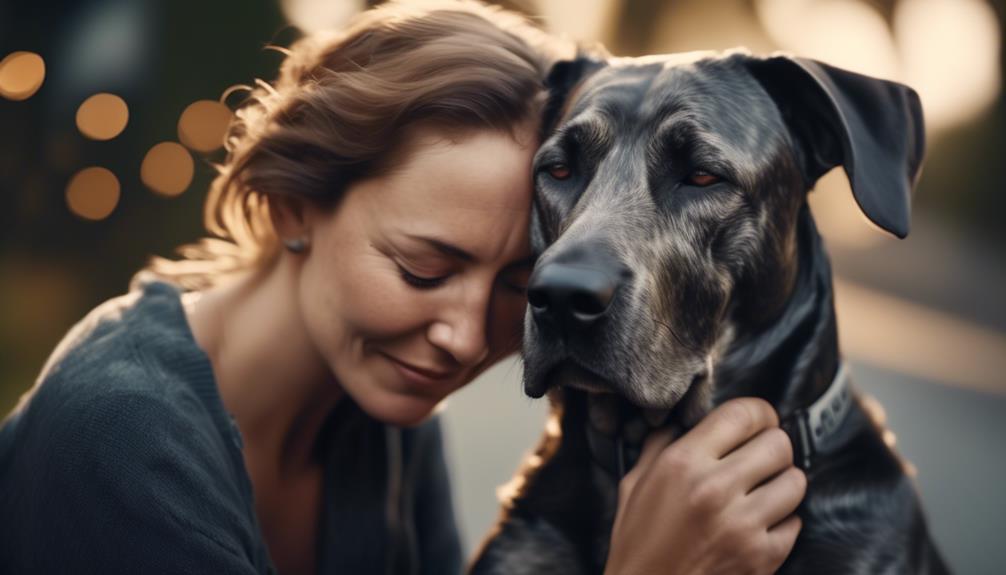
To assess a dog's affection level, observe their behavior and interactions with their owners and other family members. Pay attention to how they greet their owners, whether they eagerly seek physical contact or prefer to keep their distance. Notice if they follow their owners around the house or show signs of separation anxiety when left alone. Some dogs may be more independent or aloof, while others may be more clingy or demanding of attention. Additionally, look for signs of affection such as tail wagging, cuddling, and eagerness to be near their family. Keep in mind that not all dogs of the same breed will be equally affectionate, so it's important to assess each dog individually.
| Signs of Affection | Signs of Lack of Affection |
|---|---|
| Tail wagging | Avoidance of physical contact |
| Cuddling | Lack of interest in being near family members |
| Eager to be near family | Preferring to be alone |
| Seeking physical contact | Lack of excitement or enthusiasm |
| Showing signs of separation anxiety | Indifference towards family members |
Dogs' Ability to Sense Emotions
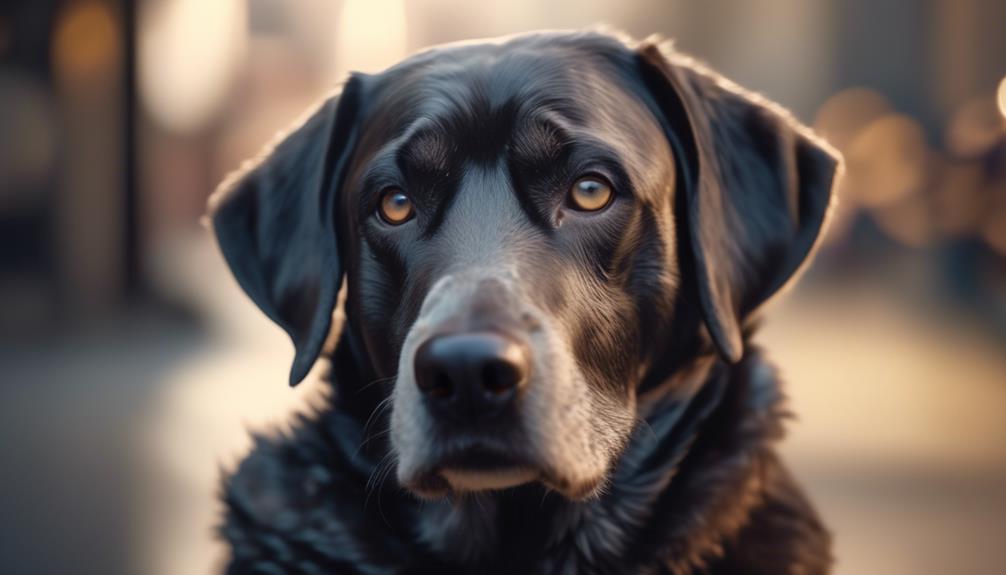
When assessing a dog's affection level, it's important to consider their ability to sense and respond to their owner's emotions. Dogs have a remarkable ability to sense their owner's needs and provide comfort and support.
Here are four reasons why dogs' ability to sense emotions is remarkable:
- Empathy: Dogs have a natural ability to empathize with their owners. They can sense when their owner is feeling sad, stressed, or anxious, and they'll often offer comfort by snuggling up or giving gentle nudges.
- Body language: Dogs are experts at reading body language. They can pick up on subtle cues like facial expressions, posture, and tone of voice to understand their owner's emotional state.
- Intuition: Dogs have an innate intuition that allows them to sense changes in their owner's mood or energy. They can often anticipate their owner's needs before they even express them.
- Bonding: Dogs form strong bonds with their owners, which enhances their ability to sense emotions. This bond allows them to develop a deep understanding of their owner's emotions and respond accordingly.
Individuality of Dog-Family Interactions
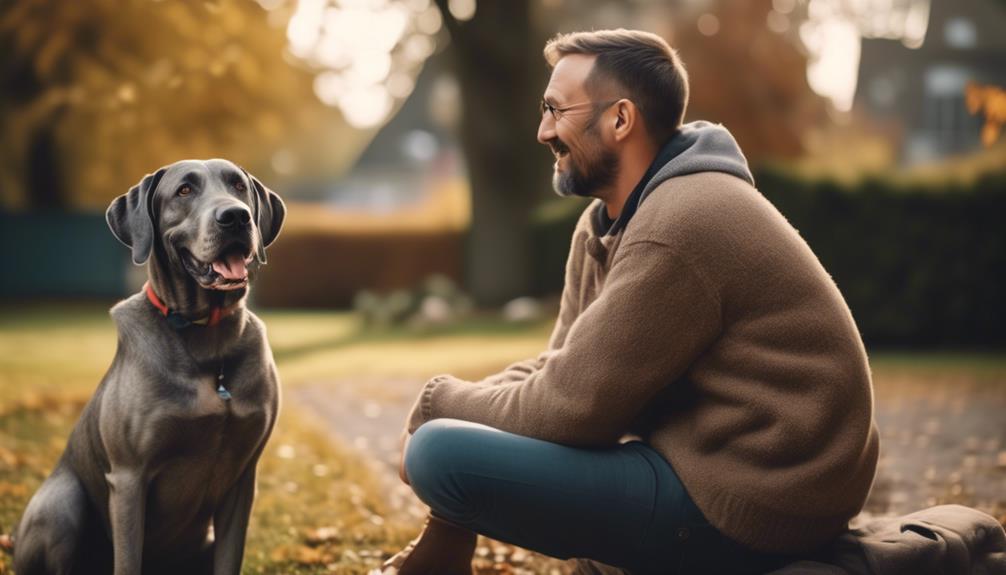
The interaction between a dog and a family is a unique and personal experience that should be evaluated on an individual basis. Each dog has its own personality and preferences when it comes to interacting with its human family members. Some dogs may be more independent and enjoy their alone time, while others may be more clingy and crave constant attention. It's important to understand and respect these individual differences in order to build a strong bond with your furry friend. To give you a better understanding, here is a table showcasing the various ways dogs may interact with their families:
| Dog-Family Interaction | Description |
|---|---|
| Affectionate | Displays love and affection through tail-wagging, cuddles, and always wanting to be by their family's side. |
| Independent | Enjoys alone time and may not seek constant attention from their family members. |
| Clingy | Craves constant attention and may become anxious when separated from their family. |
| Demanding | Requires a lot of attention and may exhibit behaviors to get their family's attention, such as barking or pawing. |
Labradane Mixed Dog Breed Pictures
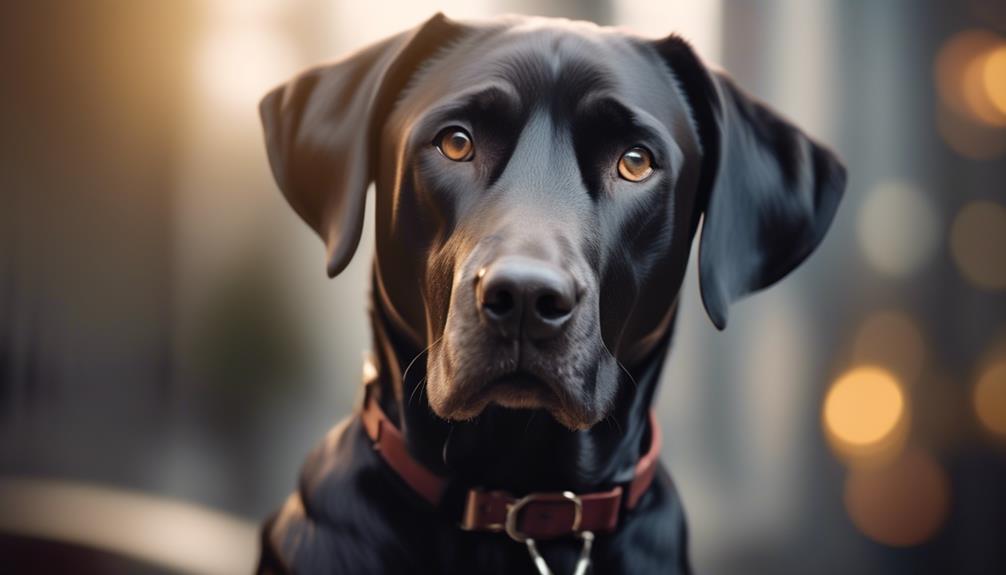
Understanding the individuality of dog-family interactions can help you appreciate the unique bond that Labradane mixed dog breeds can form, and what better way to visualize their characteristics than through Labradane mixed dog breed pictures.
Here are four fascinating qualities of Labradane mixed dog breeds that you can see in these pictures:
- Impressive Size: Labradanes are known for their large size and muscular build, making them a striking presence.
- Friendly Expression: Labradanes have a friendly and gentle expression, which adds to their charm.
- Powerful Appearance: With their broad head, deep chest, and long, sturdy tail, Labradanes have a strong and powerful appearance.
- Variety of Colors: Labradanes have a short, dense coat that can come in a variety of colors, making each dog unique.
These Labradane mixed dog breed pictures capture the essence of their individuality and make it easy to see why they're such beloved pets.
Interesting Facts About Labradanes
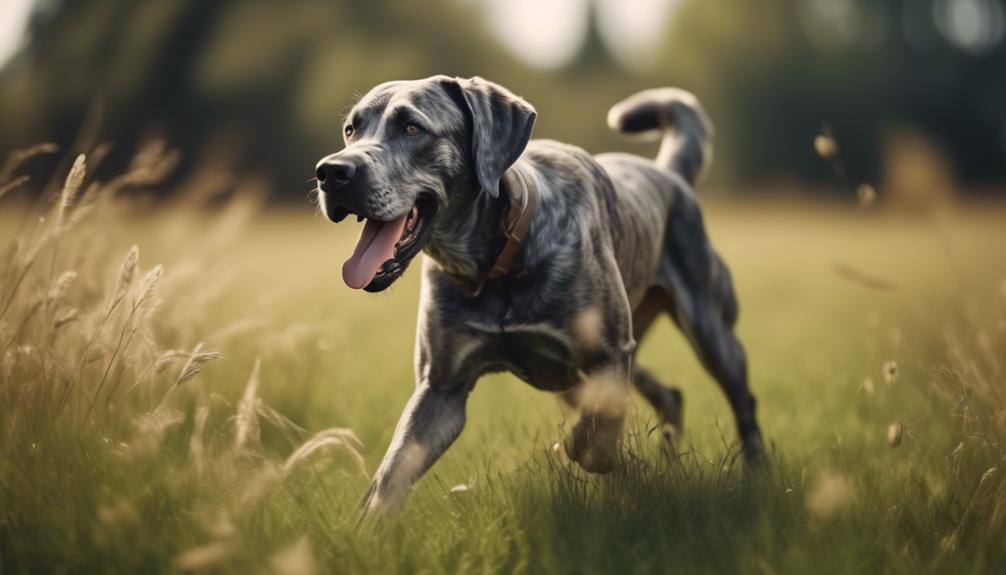
Labradanes, the mixed breed dogs that are a cross between a Labrador Retriever and a Great Dane, have some interesting facts that make them unique and captivating pets.
One interesting fact about Labradanes is their impressive size. As a result of their Great Dane parentage, Labradanes can grow to be quite large, making them a striking presence. Despite their size, Labradanes are known for their gentle and friendly nature, making them great companions for families.
Another interesting fact about Labradanes is their intelligence. With their Labrador Retriever genes, Labradanes are highly trainable and eager to please. This makes them quick learners and excellent candidates for obedience training.
Labradanes also have a protective instinct, making them great watchdogs.
Frequently Asked Questions
What Is the Average Lifespan of a Labradane?
The average lifespan of a Labradane is around 8-12 years. It's important to note that individual dogs may vary, and factors such as genetics, diet, exercise, and overall health can influence their lifespan.
Are Labradanes Prone to Any Specific Health Issues?
Labradanes can be prone to certain health issues, like hip dysplasia and bloat. Regular vet check-ups, a balanced diet, and exercise can help maintain their overall health and well-being.
How Much Exercise Do Labradanes Require on a Daily Basis?
Labradanes require regular exercise to keep them healthy and happy. Daily walks, playtime, and mental stimulation are essential. Aim for at least 30-60 minutes of exercise each day to meet their needs.
Can Labradanes Be Trained Easily?
Labradanes can be trained easily if you are consistent and patient. They are intelligent and eager to please, making them quick learners. Positive reinforcement methods work best with this breed.
Do Labradanes Have Any Specific Grooming Needs?
Labradanes do not have any specific grooming needs. Regular brushing to remove loose hair and occasional bathing should suffice. However, it is always important to check their ears, nails, and teeth for any signs of issues.
Conclusion
In conclusion, Labradanes are a unique mixed breed that combines the size and strength of a Great Dane with the friendly nature of a Labrador Retriever.
Whether you live in an apartment or a house, it's important to understand their characteristics and requirements before bringing one into your home. Labradanes are adaptable to apartment living, but size considerations and factors like exercise and training should be taken into account.
With their friendly and gentle nature, Labradanes make great companions for families.




